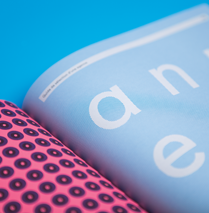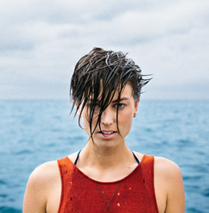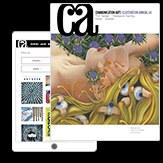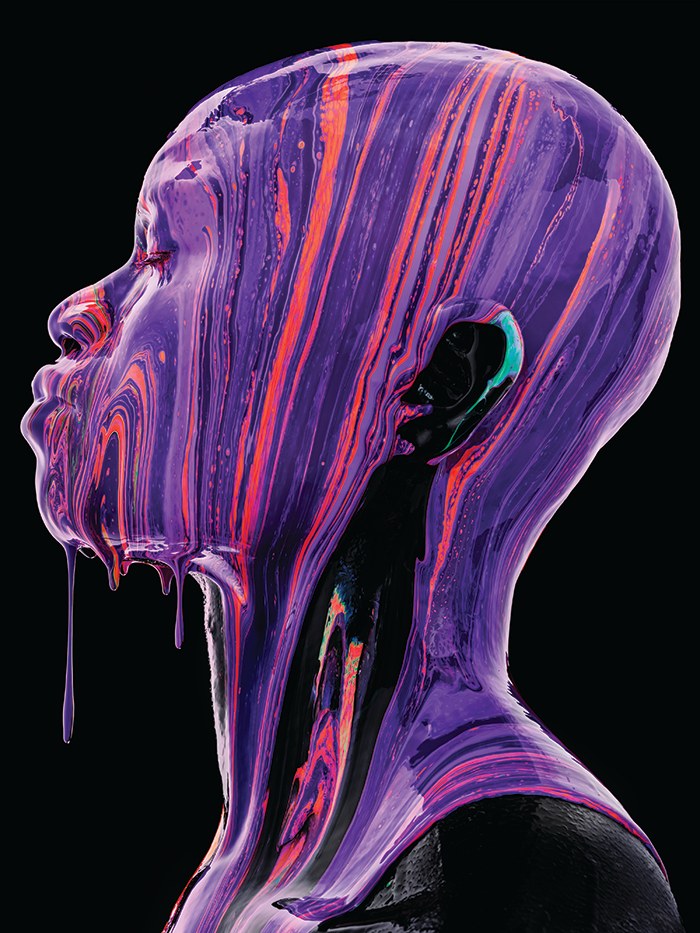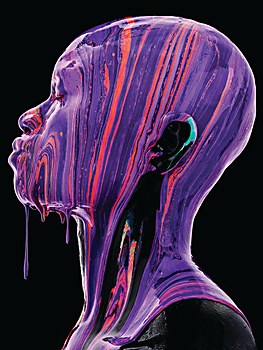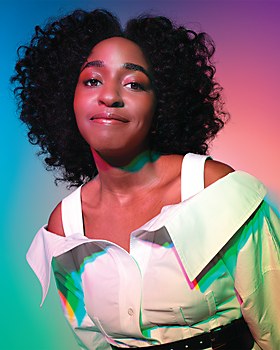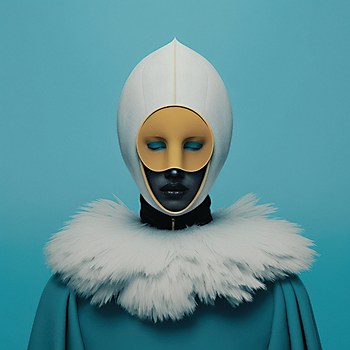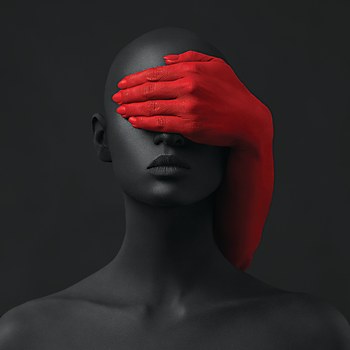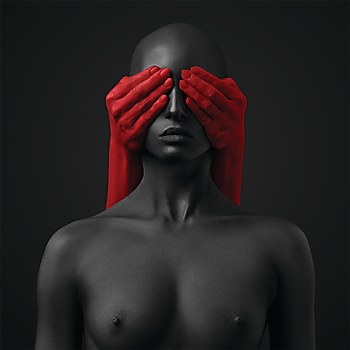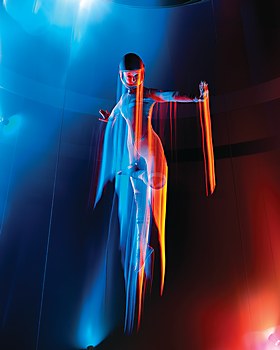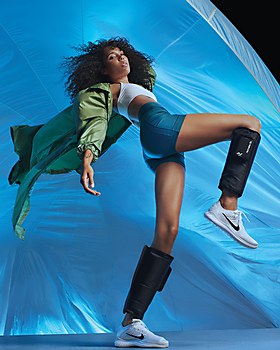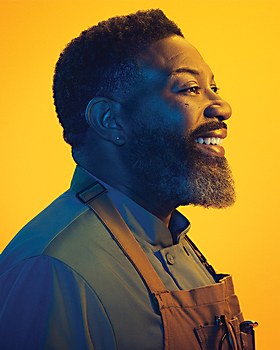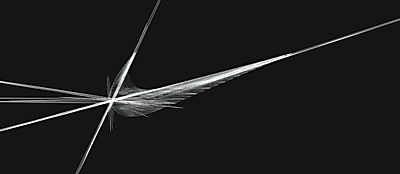It all began in Baltimore. Growing up there in the ’70s, Tim Tadder learned how to develop and print film from his father, who photographed the Baltimore Orioles team for 44 years. Decades later, he couldn’t have been prouder of his son.
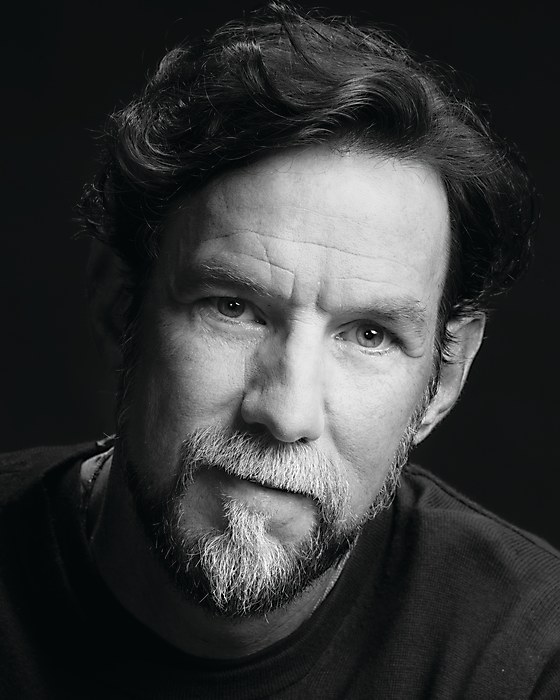
Since 2004, the award-winning international artist, photographer and director based in Encinitas, California, has elevated the brands and advertising campaigns of major corporations in sports and fitness, tech and gaming, and editorial and other industries. Names like Amazon, Nike, Peloton and Verizon have turned to him for action shots, portraits, television commercials and video promotions.
Another is Hyperice, a wearable technology for muscle and joint recovery. “A lot of artists can either come up with high-level conceptual ideas or they can execute them. Tim does both, which is rare,” says Anthony Katz, founder and president of Hyperice, who hired him in 2020 to reestablish his company’s brand identity through photography. “But Tim doesn’t force his vision on you. He tries to understand where you want to go and how best to arrive there.”
Browse Projects
Lürzer’s Archive magazine has voted Tadder among the World’s Top 200 Photographers every year since 2008, and Communication Arts featured his work in the 2012, 2018, 2019, 2020 and 2021 Photography Annuals.
“Tim serves his craft well,” says Robyn Selman, photo director at Forbes magazine. “His visual vocabulary is very wide and deep; and he knows his technology and pushes the edges. When you look at his portfolio, there’s a lot going on there.”
Along with portraits for Forbes’s 30 Under 30 North America 2022, Tadder’s camera has caught Denver Nuggets basketball player Aaron Gordon in mid-leap and sculpted the muscles of National Senior Games champions. The pulse and punch of his 2018 video for NFL New Era sideline caps match the strength and agility of the football players wearing them, with showers of light and plumes of smoke adding to the drama. He was commissioned by the Gates Foundation to take personal portraits of Bill Gates and George W. Bush, among others, and he has done campaigns featuring Ice Cube and Michael Phelps.
While Tadder puts plenty of heart into his advertising work, his fine art feeds his soul.
Who else would think to pour thick (nontoxic) paint in marbled hues over bald heads and let it drip down to the shoulders, like in Tadder’s Black is a Color (2020)? Since 2020, he has exhibited exclusively at New York’s Avant Gallery. This year at Art Wynwood, Miami’s winter art fair, the gallery previewed his most recent art: AI-generated.
“I’ve always been known as a pioneer, innovator and disrupter with my work and imagery in trying to be distinct,” says Tadder, a self-taught early adopter also of Photoshop and computer-generated imagery (CGI). And he’s always been an artist.
As a kid, Tadder relished his art classes and making art was the only thing he enjoyed doing every day. But because art was never presented to him as a profession or career, he got his BA in math instead. During a year of study at the University of Adelaide in Australia, he fell in love with the outdoors and motorcycled around the continent; and once back in the United States, those California mountains called to him. He taught high school math for three years at the Army and Navy Academy in Carlsbad, California, then left for Quito, Ecuador, to teach computers. On weekends, he climbed the Andes with his camera and held slideshows for friends. Two years later, “I found I wasn’t a great teacher but that I really loved photography,” Tadder admits.
So, he returned to his hometown of Baltimore in 2002 and shot for the local paper, working out of his father’s studio. Next came an MA in photojournalism from Ohio University’s School of Visual Communication and freelancing for several San Diego newspapers—and also, a pregnant wife. “I wasn’t making enough money to support a family and have the lifestyle we wanted, and it was either leave photography or make it work,” says Tadder.
He researched the most lucrative kind of photography, bought and set up lights, created a body of work, got an agent, and promoted his portfolio on creative database Workbook. In 2007, he got his first big break, a global campaign for Gatorade photographing ten star athletes. He hired a studio manager, full-time assistant, lead retoucher and producers, and his business took off.
By 2017, Tadder was the busiest he’d ever been in his career. Also that year, he’d broken into the fine-art world at Art Basel and showed in galleries in Amsterdam, Brussels, Miami, Montréal and New York.
His fine-art series Nothing to See (2017–18) was the first in his “unintentional trilogy,” as he calls it. In these photos, brightly colored hands wrap across the eyes, mouth and throat of fashion model Jeana Turner, who is bald from alopecia. The series challenges the false narratives that divide our country and asks viewers whether they choose to see them or not. In United States of Purple (2018), powdered pigments cover Turner’s and others’ similarly bald heads representing Tadder’s hope for finding common ground amid the United States’s political divisions. George Floyd’s murder spurred him to create Black is a Color (2020). It took several days and 40-plus gallons of paint to get the right viscosity and marbled mix of primary colors. “In this work,” he explains, “I remind people to look past the predisposed racial stereotypes that are allowed as nomenclature by our politicians and the media and instead see the beauty of the individual.”
When COVID hit and his father died of Alzheimer’s disease, Tadder took a good look at his business and, by 2022, had let the last of his team go. “Maintaining my overhead had become a distraction and took me further away from why I fell in love with photography in the first place—to communicate how I see the world through the lens. I wanted to find who I was again as a creative,” he says. “And now I can afford to be choosy about who I work with. I’m not for everybody, and that’s OK. I’m not trying to be everybody’s everything. But I guarantee you, if you put forth the effort, I’m going to go all in.”
He was glad to hear from James Sablan, art producer at the ad agency Butler Shine Stern and Partners in Sausalito, California, who hired him (again) for its 2022 Amazon Business campaign titled Buy smarter. Dream bigger. It called for ten single-image portraits showing a diversity of people who could be anyone with small-business-owner goals to appear in several airports, on New York City taxicabs and billboards.
“Originally the client thought about including objects like a laptop or a bakery mixer, but Tim sold them on the subjects being the focal point,” says Sablan. “He fine-tuned Amazon’s ideas and made them better than they envisioned. Tim has the skill to not only execute what the agency and client have in mind, but also to deliver more than they expect. The day of the shoot, he was a magician the way he connected with the talent, helping them open up, move and interact, and feel more comfortable. He got the best out of them.”
And Forbes got the best out of Tadder. For the November 2022 issue’s 30 Under 30 portraits, the magazine’s creative director Alicia Hallett Chan wanted vivid color. “But we didn’t want it to effect the natural skin tones,” says Selman.
Tadder showed them 27 different CGI options, using the lighting software set.a.light 3D. “If you mix red, green and blue light equally, the precipitating color is white light,” he explains. “I let that appear on the faces and in the shadows then added more colored lighting to the latter for a rainbow effect. The colored shadows and the natural skin tones make the image. No one had done that before. Robyn allowed me to create something that’s visually striking and inspires people to engage in the content.”
So did Tim Hinson, creative director at Logitech G. Its Astro A30 gaming headset is “a breakthrough product that needed a breakout campaign,” as he says. For its 60-second launch video and 24 stills released in September 2022, “we had a concept around a sense of wonder and magic, pristine and perfect with a culture code of mastery, like gamers want to see, but grounded in a contemporary urban-street, swag look and feel that’s modern and ‘now,’” Hinson explains. “As director, Tim really met the brief, respecting our vision—and enhancing it.”
In Logitech G’s video, scenes bathed in white with glints of color toggle with those saturated in fog-induced hues, while “gods from four archetypes”—gaming, music, sports and fashion—rule it cool to a hyperpop hip-hop groove.
“Tim nailed the color treatment, celebrating the product’s color, material and finish, and his style was perfect for the campaign,” says Verity Peets, Logitech G’s associate creative director. Hinson adds, “He’s a master at color story, and we trusted him 100 percent on that and his strong opinion around casting. He also has an incredible drive and energy, and his attention to detail is insane. We felt really taken care of.”
That’s because Tadder always brings his passion to the profession. “If you want to be successful, you have to have that, and offer what no one else can,” he says. “You also have to remain relevant.”
For him, that means producing more content, and AI is the tool for that; he uses Midjourney to produce photorealistic images. “AI allows me to explore and exercise my creative mind more quickly,” Tadder says. “As an artist, I’m pushing myself past my limits to find my next voice. What am I drawn to? What am I going to say? I want to stay within my genre and my brand, but I want to communicate more and connect my art to more people and touch more lives. According to Instagram, in the last 30 days, I’ve reached 619,000 non-followers who weren’t aware of my work before.” (See instagram.com/timtadder.)
The challenges posed by AI, namely concerns of artistic appropriation and copyright violation, aren’t lost on Tadder. “Just as important, the people who live and breathe AI are going to create at such a high level and quantity and will get the attention. Average creatives won’t be able to compete if they don’t use it,” he explains. “The next ten years will be all about AI. And the reality of it is that if you’re not thinking about what’s next, by the time ‘next’ comes, you’ll be behind. We live in a world where attention is all that matters; that’s what advertising and communication arts are all about. If no one hears you talking, are you saying anything?” ca



